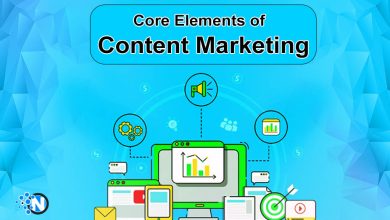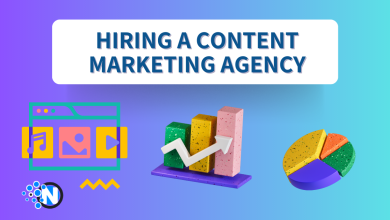Optimize Content Marketing with Digital Advertising Templates

Within the dynamic digital landscape, content marketing serves as a fundamental tool for enterprises seeking to engage their intended demographic. Content marketing strategies encompass diverse materials, including blog posts, social media updates, videos and email newsletters; nevertheless, the process of generating and overseeing these resources can be labor-intensive and potentially daunting.
Digital advertising templates offer a feasible solution by offering a structured and streamlined approach to content marketing. Ergo, this article assesses the notion of digital advertising templates, highlighting their advantages and demonstrating effective implementation within an existing content marketing strategy.
What Are Digital Advertising Templates?
Digital advertising templates are pre-designed and customizable layouts that businesses use to create various types of digital content, such as social media ads, display ads and email campaigns. These dynamic templates typically include placeholders for text, images and other elements, facilitating users to easily replace the default content with their own, available in a variety of formats including graphic design software files (e.g., Adobe Photoshop or Canva templates), HTML templates for email campaigns or pre-made content for social media platforms.
The primary goal of digital advertising templates is to streamline the content creation process, offering a foundation for designing content that is visually appealing, on-brand and consistent across different platforms. For small business owners with limited design skills or those part of a marketing team looking to save time and maintain a cohesive visual identity, digital advertising templates can be transformative.
The Benefits of Using Digital Advertising Templates
- Time efficiency: Content creation can be a time-consuming task; digital advertising templates allow companies to skip the initial design phase and focus on customizing content to fit a specific message and goals. This time-saving is particularly critical for businesses that must maintain an active online presence across multiple platforms.
- Consistency: Maintaining a consistent brand identity is essential for building brand recognition and trust; templates ensure that content adheres to a brand’s color scheme, typography and design elements, ultimately resulting in a more cohesive and professional look.
- Ease of use: Digital advertising templates are user-friendly and require minimal design expertise; they come with clear instructions and often feature drag-and-drop interfaces, making them accessible to individuals with varying levels of design skills.
- Cost-effective: Creating custom content from scratch can be expensive, particularly for those requiring a professional designer. Using templates can significantly reduce design costs while yielding high-quality results.
- Versatility: Digital advertising templates can be adapted for various marketing purposes, from social media posts and email campaigns to website banners and promotional materials; this versatility accommodates businesses to address an extensive range of content marketing needs with a single template.
- Responsive design: Many templates are designed to be responsive, ensuring that content functions optimally on all devices and screen sizes – a crucial component for optimizing user experience and engagement.
Implementing Digital Advertising Templates in a Content Marketing Strategy

To leverage the benefits of digital advertising templates effectively, businesses require a discerning implementation strategy, outlined in the following steps:
- Identify goals: Begin by defining the overarching content marketing goals; for example, is the aim to boost engagement on social media, increase website traffic or enhance email campaign performance? Defining these objectives guides the choice of templates and the type of content to be created.
- Determine the optimal templates: Select templates that align with pre-defined goals and the visual identity of the brand, paying close attention to details like color schemes, typography and the overall design style of templates. Moreover, consider the platforms for using these templates, ensuring they are compatible.
- Customize templates: Once the templates have been determined, the next step is personalization; replace the default text with specific brand messaging, insert the company logo and select high-quality images that resonate with the target audience. Lastly, ensure that the content is compelling and relevant for this demographic.
- Maintain brand consistency: Use the same templates across different marketing channels to maintain brand consistency. Consistency in design, tone and messaging can build a strong brand identity that customers can easily recognize.
- A/B Testing: To optimize the performance of content, consider running A/B tests with different variations of templates – this can assist businesses in identifying which template designs and content elements resonate most with the audience.
- Monitor and analyze results: Regularly track the performance of content, analyzing metrics such as engagement rates, click-through rates and conversion rates. Use these insights to refine the content marketing strategy and make necessary adjustments to templates.
- Remain updated: The digital landscape is ever-changing – ensure templates remain current with the latest design trends and best practices to remain relevant and competitive.
Types of Digital Advertising Templates
Digital advertising templates come in various forms, each catering to specific content marketing needs. The following are some common classifications:
- Social media templates: These are designed for creating posts on social media platforms like Facebook, Instagram, Twitter and LinkedIn, often including templates for different post types such as image posts, video posts and carousel posts.
- Email templates: Email templates assist in creating professional and responsive email campaigns; these can be used for newsletters, promotional emails or event invitations.
- Display ad templates: Display ads are an essential part of online advertising; these assist businesses in creating eye-catching banners for websites and advertising networks.
- Blog post templates: Blog post templates are used to structure and format blog articles, helping to maintain a consistent layout for a blog and making it more reader-friendly.
- Website landing page templates: Landing pages are critical for conversions – templates assist businesses in creating focused and persuasive pages that drive action.
- Video templates: Video marketing is on the rise – video templates assist in creating engaging and professional video content for a website or social media channels.
Conclusion
Digital advertising templates are a valuable resource for businesses seeking to streamline their content marketing efforts. They offer numerous benefits, including time efficiency, consistency, cost-effectiveness and ease of use; by implementing these templates effectively, businesses can create compelling, on-brand content across various marketing channels.
For small business owners seeking to save time and resources or marketing professionals endeavoring to maintain brand consistency, digital advertising templates can be transformative for an overarching content marketing strategy. By determining the optimal templates, customizing them to fit the brand and goals and continuously analyzing their performance, it is possible to create content that resonates with a target audience and drives marketing objectives forward. With the wide range of digital advertising templates and tools available, businesses of all sizes can benefit from this streamlined approach to content marketing.




